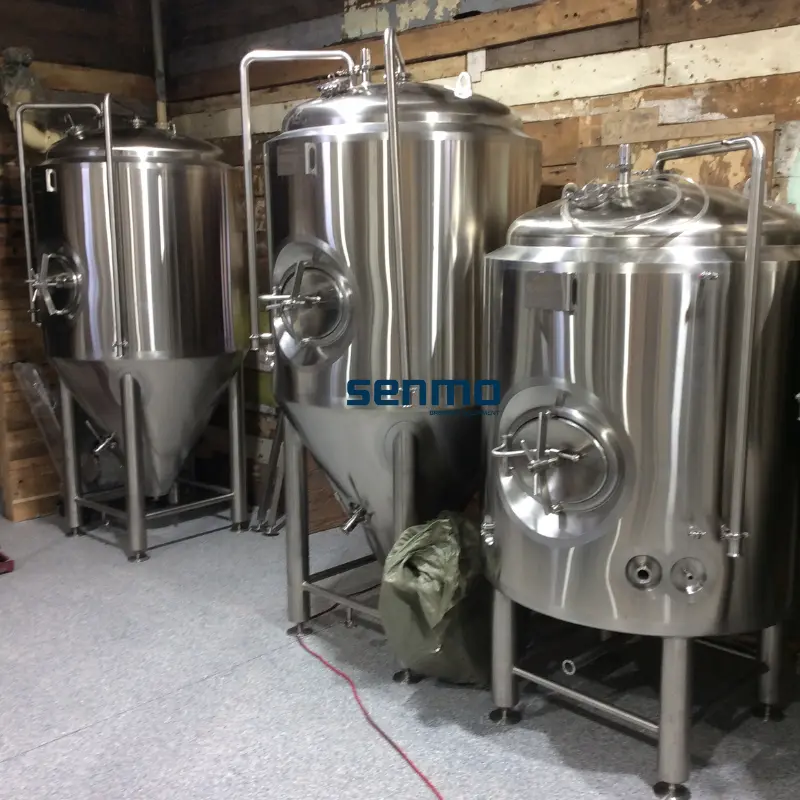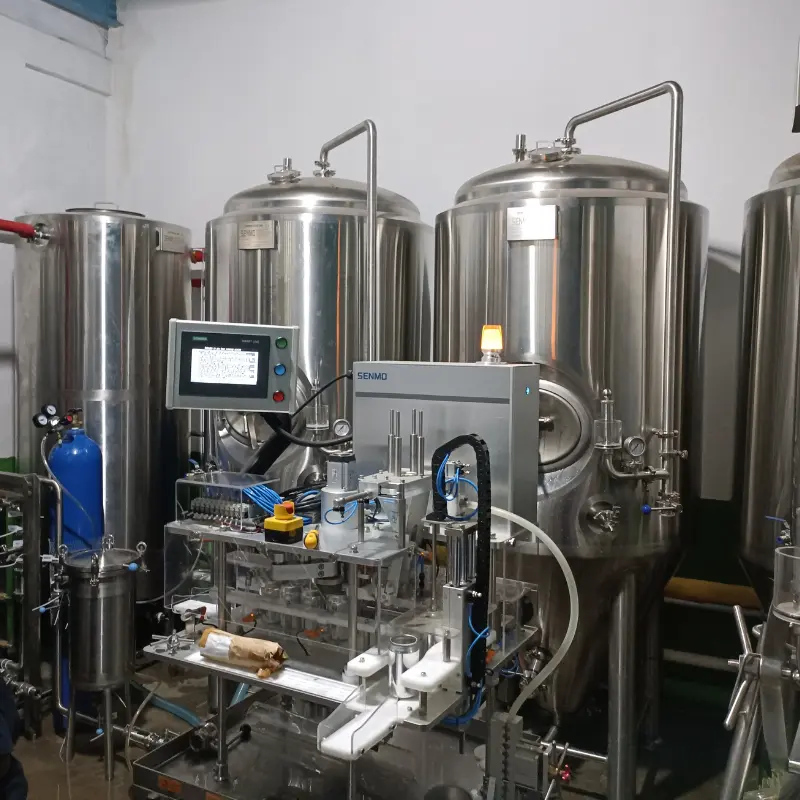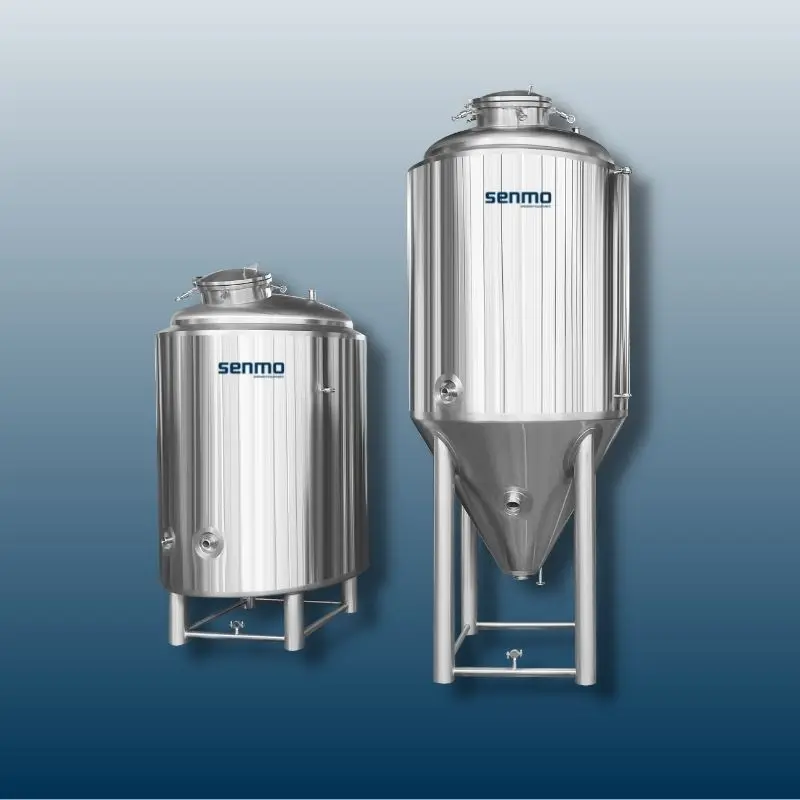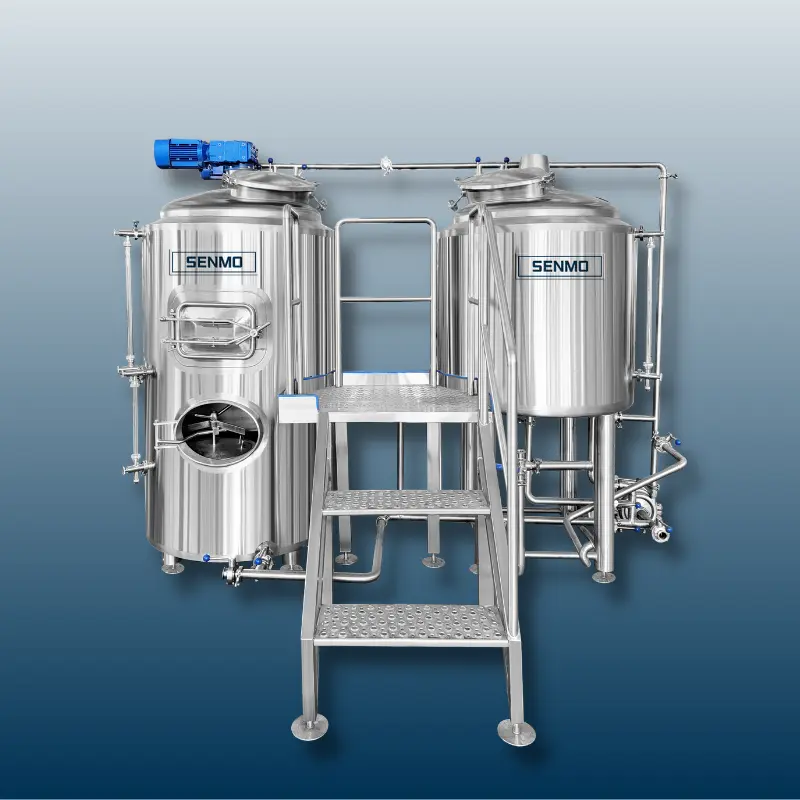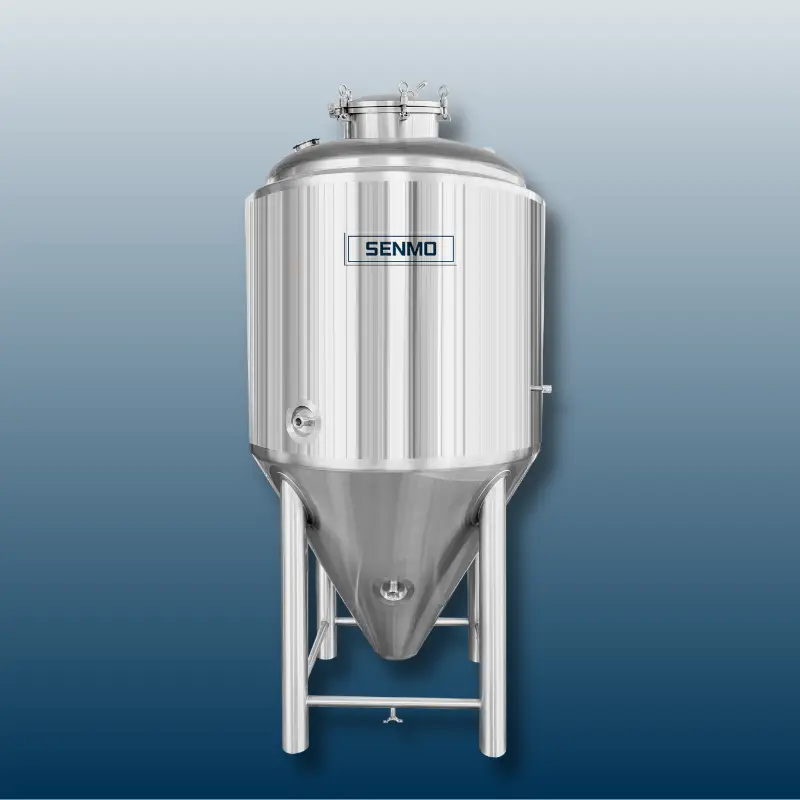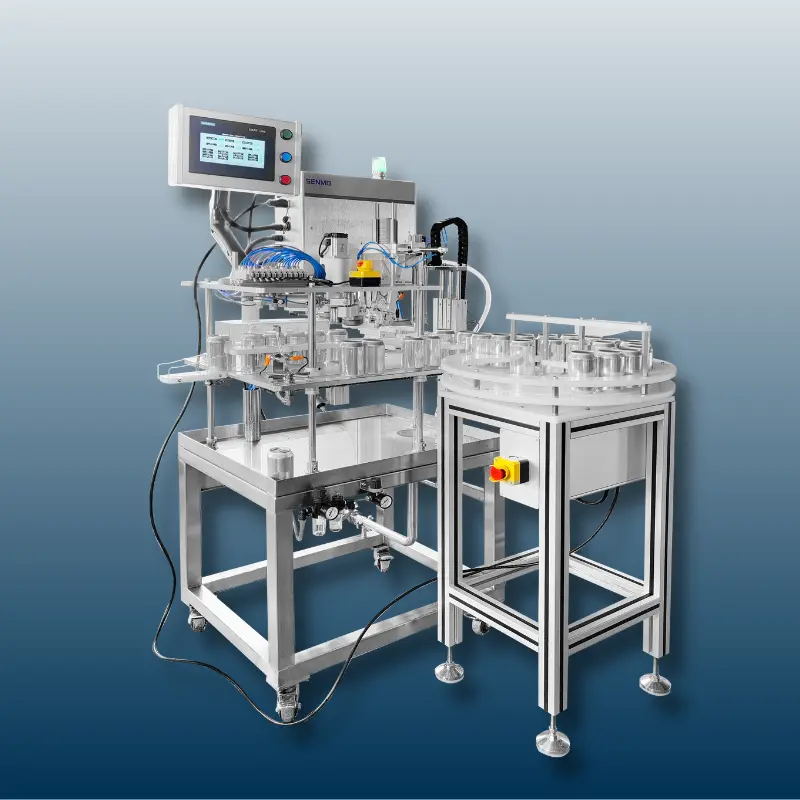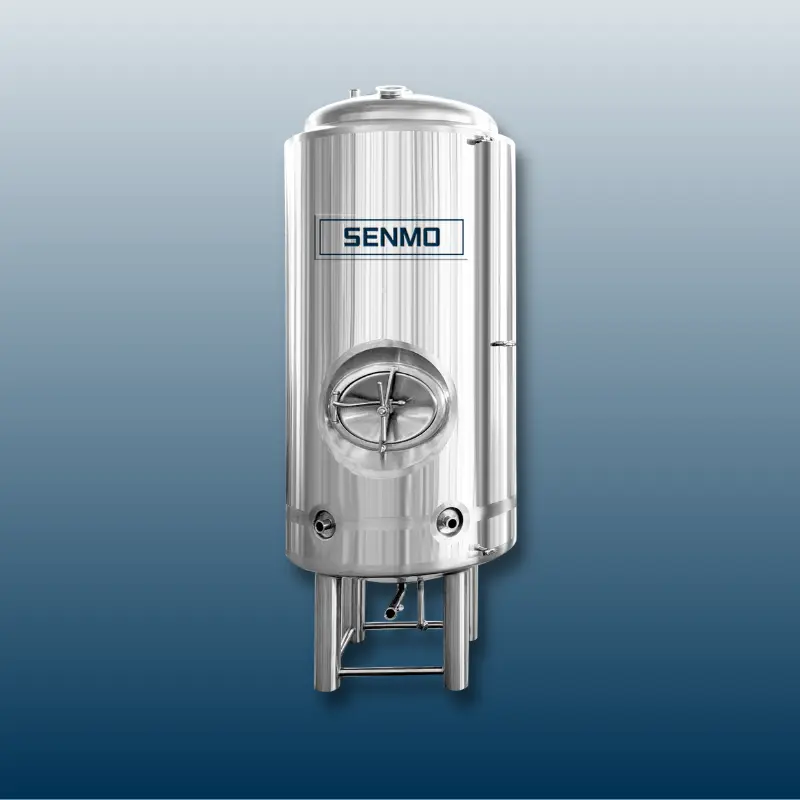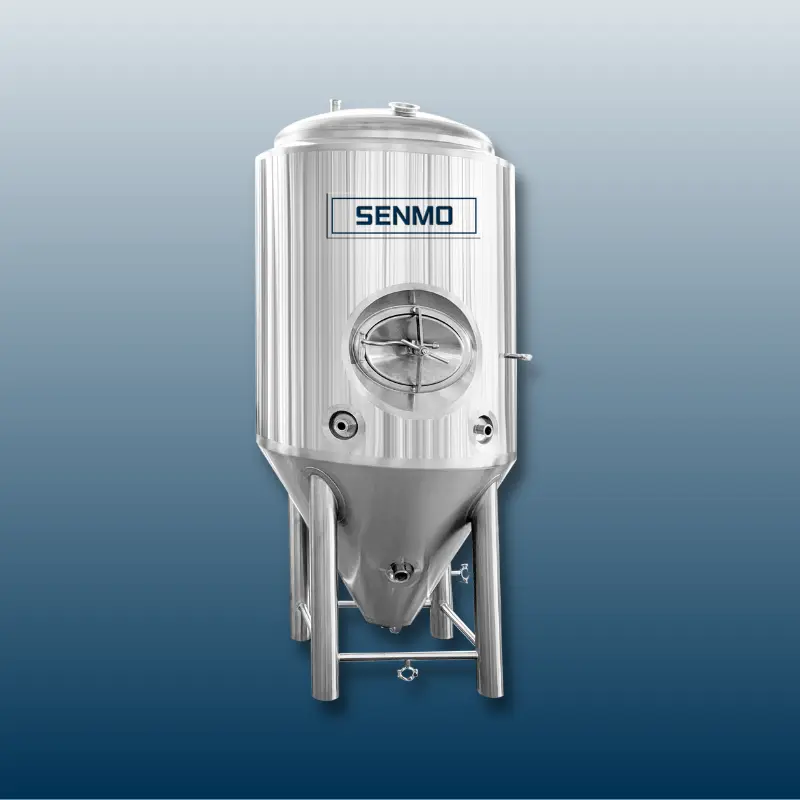In the vibrant world of craft beer, the journey from a humble microbrewery to a thriving macro-scale operation is a testament to the passion, innovation, and strategic planning of brewers. As the demand for unique, flavorful, and artisanal brews continues to soar, craft breweries are increasingly turning to next-generation brewhouses to scale up their production while preserving the essence of their craft. This article delves into the challenges, opportunities, and technological advancements that facilitate this transition from micro to macro.
The Rise of Craft Beer Culture
Craft beer's ascendancy over the past few decades has transformed the global beer landscape, reshaping consumer preferences and fostering a vibrant, innovative industry. This remarkable rise has been fueled by a profound shift in consumer attitudes towards beer, as people have come to appreciate the intricate flavors, diverse styles, and compelling stories that underpin each pint of craft brew.
The Quest for Quality and Diversity
At the heart of the craft beer revolution lies a growing dissatisfaction with mass-produced, homogenized beers. For decades, beer lovers were limited to a narrow range of flavors and styles, often characterized by a bland, one-dimensional taste. However, as consumers became more discerning and adventurous, they began to seek out alternatives that offered a richer, more complex experience. Craft breweries responded to this demand by prioritizing quality over quantity, carefully selecting ingredients, experimenting with new brewing techniques, and pushing the boundaries of traditional beer styles.
The Ingredient Revolution
One of the key factors driving the rise of craft beer is the emphasis placed on ingredients. Craft brewers understand that the quality of their beer starts with the raw materials they use. As such, they source the finest malts, hops, yeasts, and water from around the world, often working directly with farmers to ensure that their ingredients are of the highest quality. This commitment to sourcing has led to a proliferation of unique flavors and styles, as brewers experiment with different combinations of ingredients to create beers that are truly one-of-a-kind.
The Art of Experimentation
Craft breweries are also renowned for their willingness to experiment. Unlike large, industrial breweries that are constrained by the need to produce large volumes of consistent product, craft breweries have the freedom to try new things and take risks. This has led to a surge in creativity and innovation within the industry, as brewers push the boundaries of traditional beer styles and develop new, exciting hybrids. From bold IPAs infused with fruit and spices to complex sour ales aged in barrels, the world of craft beer is a never-ending exploration of new flavors and textures.
The Power of Storytelling
Another factor that has contributed to the rise of craft beer is the emphasis placed on storytelling. Craft breweries often have a rich history and a compelling narrative that they use to connect with consumers. By sharing their stories, brewers create a sense of community and belonging among their customers, who feel a deeper connection to the beer they drink. Whether it's a family-owned brewery that has been passed down through generations or a group of friends who started a brewery to pursue their passion for beer, these stories add depth and meaning to the products they produce.
The Thriving Ecosystem
The rise of craft beer has created a thriving ecosystem where small, independent breweries have flourished. These breweries, often starting as microbreweries in garages or converted warehouses, have grown into thriving businesses that contribute significantly to their local economies. As the craft beer market continues to expand, more and more people are being drawn to the industry, from brewers and bartenders to marketers and distributors. This growth has led to the creation of a vibrant, interconnected community that supports and promotes the craft beer movement.
The meteoric rise of craft beer over the past few decades has been fueled by a growing appreciation for quality, diversity, and the story behind each pint. Consumers are no longer satisfied with mass-produced, homogenized brews; they seek out breweries that prioritize ingredients, experimentation, and sustainability. This shift has created a thriving ecosystem where small, independent breweries have flourished, pushing the boundaries of traditional beer styles and creating a world of exciting, flavorful ales. As the craft beer movement continues to evolve, it will undoubtedly continue to shape the future of beer, inspiring brewers and consumers alike to embrace the art of brewing and the joy of drinking.
The Challenge of Scaling Up
Craft breweries have experienced a remarkable surge in popularity over the past few decades, fueled by a growing appreciation for unique flavors, artisanal processes, and a desire for more personalized beverage experiences. With this heightened demand, many of these small-batch operations find themselves at a crossroads: either stay put and risk losing market share to larger competitors, or embark on a journey of scaling up their production. However, this transition is fraught with challenges that go beyond simply increasing output. It's a delicate balance of maintaining the authenticity and character that attracted customers in the first place, while efficiently managing the logistics of larger-scale operations.
The Investment in Infrastructure
Scaling up craft breweries necessitates significant investments in infrastructure. From upgrading fermentation tanks and bottling lines to installing state-of-the-art water treatment systems and temperature control mechanisms, the costs can quickly escalate. According to a report by the Brewers Association, the average cost of equipment for a brewery expanding from 5,000 barrels per year to 20,000 barrels can exceed $1 million. This figure doesn't include the additional costs associated with expanding facilities, such as leasing or constructing new space, and upgrading utilities to support the increased demand for water, electricity, and gas.
Managing Complexity and Ensuring Consistency
As production volumes rise, so does the complexity of managing the brewing process. Brewers must contend with larger batches, which can be more challenging to control and maintain uniformity. Ensuring consistency across every pint becomes paramount, as even subtle variations in temperature, pH levels, or ingredient ratios can significantly alter the final product's taste and aroma. Automation becomes a crucial tool in this endeavor, allowing for precise control over various stages of the brewing process. However, this transition requires careful consideration to avoid losing the personal touch and craftsmanship that define many small breweries.
Preserving Craftsmanship and Innovation
At the heart of every craft brewery lies a passion for creating unique, high-quality beers. Scaling up can threaten this essence if not approached strategically. Breweries must find ways to incorporate new technologies and efficiencies while still nurturing a culture of experimentation and creativity. For instance, some breweries have established "pilot systems" within their facilities, dedicated to testing new recipes and techniques on a smaller scale before integrating them into full-scale production. This approach allows them to maintain their innovative edge while ensuring that their flagship products remain consistent and beloved.
The Human Factor
Scaling up also poses challenges in terms of human resources. As operations expand, breweries need to recruit, train, and retain a skilled workforce capable of handling the increased workload. Finding and retaining talented brewers, particularly those with experience in larger-scale production, can be a significant challenge. Breweries may need to invest in employee development programs and create a strong company culture that fosters loyalty and creativity.
Examples of Successful Scaling
Several craft breweries have successfully navigated the challenges of scaling up while preserving their craftsmanship. New Belgium Brewing, for example, began as a small operation in Fort Collins, Colorado, and has since expanded to become one of the largest craft breweries in the US. Through careful investment in infrastructure, automation, and employee development, they've managed to maintain their innovative spirit while producing beers that are enjoyed by millions worldwide.
Similarly, Sierra Nevada Brewing Company, which started as a garage brewery in Chico, California, has expanded its operations to include a second brewery in North Carolina. They've achieved this growth while staying true to their roots, offering a diverse range of beers that showcase their commitment to quality and craftsmanship.
Scaling up craft breweries is a complex endeavor that requires strategic planning, significant investments, and a deep understanding of the industry's nuances. By focusing on preserving the essence of their craft while embracing the efficiencies of larger-scale production, breweries can not only meet the demands of a growing market but also continue to thrive and innovate for years to come.
Enter Next-Generation Brewhouses
Entering the realm of next-generation brewhouses is a pivotal step for craft breweries seeking to navigate the path of expansion while preserving their artisanal roots and quality standards. These state-of-the-art systems, powered by advancements in technology and designed with scalability, automation, efficiency, and data-driven decision-making at their core, are transforming the brewing industry.
Scalability: A Modular Approach to Growth
Craft breweries often face the challenge of balancing growth aspirations with financial constraints and market uncertainties. Next-generation brewhouses address this dilemma by offering modular designs that can be tailored to fit varying production needs. For instance, a start-up brewery might initially invest in a compact, 10-hectoliter system that can seamlessly integrate additional tanks, fermenters, and brewing vessels as demand increases. According to industry reports, such modular expansion strategies can reduce upfront capital expenditures by up to 30% compared to building a fully equipped facility from scratch, making it an attractive option for breweries with limited budgets.
Moreover, the scalability of these systems enables breweries to maintain a lean operation during slow seasons while ramping up production during peak periods, maximizing profitability. For example, a brewery that experiences a 20% annual growth rate can incrementally add brewing capacity every two years, ensuring that production capabilities align with market demand.
Automation: Streamlining Processes for Precision and Consistency
Automation is the cornerstone of next-generation brewhouses, significantly reducing human intervention and enhancing the overall brewing process. Advanced temperature control systems, like PID (Proportional-Integral-Derivative) controllers, maintain precise brewing temperatures within a fraction of a degree, ensuring that every batch tastes exactly as intended. This level of precision is critical for maintaining the intricate balance of flavors and aromas that define a brewery's unique style.
Automated fermentation monitoring systems track key parameters like pH, dissolved oxygen, and gravity, allowing brewers to intervene promptly if necessary, minimizing the risk of off-flavors or spoilage. Furthermore, automated cleaning-in-place (CIP) systems reduce the time and labor required for sanitation, ensuring hygiene standards are met consistently across all equipment.
By automating these tasks, brewers can focus on developing new recipes, experimenting with unique ingredients, and enhancing the customer experience, all while maintaining the consistency and quality that their brand is known for.
Efficiency: Saving Resources and Reducing Environmental Impact
Efficiency is not just about saving money; it's also about reducing the environmental footprint of brewing operations. Next-generation brewhouses employ energy-efficient designs and advanced process controls to minimize water and energy consumption. For instance, heat recovery systems capture and reuse waste heat generated during the brewing process, reducing the need for additional energy inputs.
Data from a recent study suggests that implementing heat recovery systems in brewhouses can reduce energy consumption by up to 40%, leading to significant cost savings and a lower carbon footprint. Additionally, advanced water treatment and recycling technologies enable breweries to reuse a significant portion of their process water, further reducing waste and conserving this precious resource.
Data-Driven Decision Making: Insights for Continuous Improvement
At the heart of next-generation brewhouses lies a robust data analytics platform that provides real-time insights into every aspect of the brewing process. From raw material consumption to fermentation kinetics to final product quality, breweries can collect and analyze vast amounts of data to optimize their operations.
This data-driven approach enables breweries to fine-tune recipes, identify inefficiencies, and predict demand trends with unprecedented accuracy. For example, by analyzing historical sales data and social media sentiment, breweries can anticipate consumer preferences and adjust production schedules accordingly, reducing inventory waste and maximizing profits.
Moreover, data analytics tools can help breweries identify areas for process improvement, such as reducing fermentation time or optimizing ingredient usage. These insights drive continuous improvement, enabling breweries to stay ahead of the curve and maintain their competitive edge in an increasingly crowded market.
Next-generation brewhouses represent a paradigm shift for craft breweries looking to expand their operations without compromising on quality or craftsmanship. By leveraging scalability, automation, efficiency, and data-driven decision-making, these systems empower breweries to navigate the complexities of growth while staying true to their artisanal roots. As the brewing industry continues to evolve, next-generation brewhouses will play a pivotal role in shaping the future of craft beer.
Preserving Craftsmanship
In the rapidly evolving world of craft beer, where technology and innovation are driving new frontiers of taste and production efficiency, it's paramount to recognize and preserve the essence of craftsmanship that has defined this industry since its inception. Despite the influx of advanced machinery and automation processes, the soul of craft beer lies in its handmade, artisanal character—a testament to the human ingenuity and passion that goes into every pint.
Craft beer enthusiasts worldwide continue to seek out unique, flavorful brews that tell stories of terroir, heritage, and the skillful hands that crafted them. According to the Brewers Association, the number of craft breweries in the United States alone has grown exponentially over the past decade, from around 2,000 in 2010 to over 9,000 today, a testament to the enduring appeal of craft beer and the commitment to preserving its artisanal roots.
Next-generation brewhouses are navigating a delicate balance between leveraging technological advancements to enhance efficiency and maintaining the authenticity and craftsmanship that consumers cherish. Automation, for instance, has revolutionized tasks such as temperature control, fermentation monitoring, and ingredient metering, allowing brewers to maintain precision levels previously unattainable without round-the-clock supervision. By automating these routine yet crucial processes, brewers are freed up to focus on the more creative and nuanced aspects of beer-making.
One example of this balance is found in the use of automation systems for yeast propagation and management. With precision-controlled environments and automated monitoring, breweries can ensure consistent yeast health and performance, which directly impacts the flavor profile and quality of the final beer. However, the selection and cultivation of specific yeast strains, often tailored to enhance specific flavors or characteristics, remains a highly skilled and artisanal process.
Another area where technology and craftsmanship intertwine is in the fine-tuning of recipes. While software tools can assist in calculating ingredient ratios and predicting flavor profiles, the final decisions on what goes into the brew kettle still rely heavily on the brewer's palate, experience, and creativity. This is especially evident in the realm of experimental brews, where brewers push the boundaries of traditional styles by incorporating unconventional ingredients or unique fermentation techniques.
Moreover, the human touch is invaluable in overseeing critical stages of the brewing process, such as sensory evaluation. Regular tastings during fermentation and aging allow brewers to detect subtle changes in flavor and aroma, enabling them to make adjustments to maintain desired profiles. This direct, hands-on interaction with the beer is something that even the most advanced technology cannot fully replicate.
Furthermore, the marketing and branding of craft beer often emphasize the story behind the beer and the craftspeople behind it. Consumers are drawn to the authenticity and personal connection that comes with knowing the face and name of the brewer who crafted their favorite pint. This aspect of craft beer culture is deeply rooted in its artisanal nature and underscores the importance of preserving and celebrating craftsmanship.
As craft beer continues to evolve and expand its reach, maintaining the balance between technological advancements and artisanal craftsmanship is vital to its success and appeal. By leveraging technology to streamline routine tasks and enhance efficiency, brewers can devote more time and energy to the creative and nuanced aspects of beer-making, ensuring that every pint tells a story of passion, skill, and dedication. As the industry grows, so too must the commitment to preserving and celebrating the heart of craft beer: its artisanal roots.
Conclusion
The transition from micro to macro-scale craft beer production is a complex yet exciting journey. Next-generation brewhouses, with their scalability, automation, efficiency, and data-driven capabilities, are essential tools for breweries looking to expand while preserving the essence of their craft. As the craft beer industry continues to evolve, these advancements will undoubtedly shape the future of brewing, enabling breweries to reach new heights while staying true to their roots. The journey from micro to macro in craft beer production underscores the importance of embracing next-generation brewhouses. These innovative systems not only facilitate the expansion of breweries but also ensure that the essence and flavor profiles of craft beer remain intact. By balancing technological prowess with traditional brewing techniques, the craft beer industry continues to thrive, satisfying the growing demand for high-quality, artisanal brews on a global scale.

